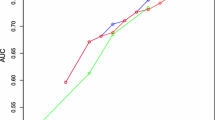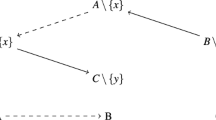Abstract
The outranking methods usually contain two main steps: determination of a (sometimes valued) relation which aggregates the preferences and exploitation of this relation in order to choose, sort or rank the actions. In a ranking problem, the second step is the construction of a (complete or partial) preorder from a (valued) relation. We have considered it was interesting to list the ‘good properties’ such a construction should verify and to analyze some procedures in this context. We present here the first results of this study, which concern the construction of a complete preorder from a non valued relation.
Similar content being viewed by others
References
Bana E Costa, C. (ed.): 1990, Readings in Multiple Criteria Decision Aid, Springer-Verlag.
Bouyssou, D. and Perny, P.: 1990, ‘Ranking methods for valued preference relations: a characterization of a method based on leaving and entering flows’. Cahiers du Lamsade, No. 101, Université Paris-Dauphine.
Roubens, M. and Vincke, Ph.: 1985, Preference Modelling, Springer-Verlag, Lecture Notes in Economics and Mathematical Systems, Vol. 250.
Vincke, Ph.: 1989, L'aide multicritère à la décision. Editions de l'Université de Bruxelles and Editions Ellipses.
Vincke, Ph.: 1991, ‘Exploitation d'une relation non valuée dans une problématique de rangement complet’. Documents du Lamsade, No. 62, Université Paris-Dauphine.
Author information
Authors and Affiliations
Rights and permissions
About this article
Cite this article
Vincke, P. Exploitation of a crisp relation in a ranking problem. Theor Decis 32, 221–240 (1992). https://doi.org/10.1007/BF00134150
Issue Date:
DOI: https://doi.org/10.1007/BF00134150




